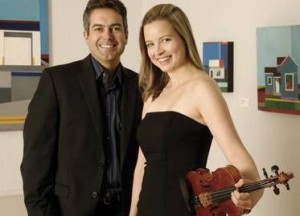UTAH SYMPHONY, Abravanel Hall, April 17; additional performance 8 p.m. April 18, tickets at 801-355-2787, 888-451-2787 or www.utahsymphony.org
In a refreshing change from its usual heavily 19th century repertoire, this weekend’s Utah Symphony program is an all-Mozart affair.
Mozart’s works are among the most difficult to play well. His music demands craftsmanship and impeccable interpretative skills as well as consummate musicality and technique.
Fortunately, all this was on display Friday evening. Under the remarkable leadership of guest conductor Paul Goodwin the orchestra gave finely articulated readings of the three works on the program: the Symphony in D major (after the Posthorn Serenade), the Symphony No. 41, Jupiter, and the Piano Concerto No. 21 in C major, K. 467.
Goodwin, a replacement for the originally scheduled Bernard Labadie, elicited wonderfully precise playing from the ensemble, with beautifully molded dynamics and nuanced expressions. The only sour note to the evening was that the finale of the Jupiter came across a bit muddled because Goodwin lost control of the balance and let the trumpets and timpani overpower the others.
This weekend’s guest soloist, Benedetto Lupo, is no stranger to Utah. He has appeared here in the past; he is also a former contestant and judge at the Gina Bachauer competition.
The C major Concerto is one of Mozart’s most popular concertos, thanks to its appealing melodies and light, airy character. Film buffs will also recognize the slow movement from the 1967 Swedish film Elvira Madigan.
Lupo showed himself to be a fine Mozart interpreter and excellent technician who brought much to the table in terms of musicality. This was an exceptionally conceived and executed account of the concerto that let the music stand on its own without any editorializing from the soloist or the conductor. He and Goodwin captured the intimacy of the work with their nicely balanced interplay between the piano and ensemble. The performance was an absolute delight from start to finish.

